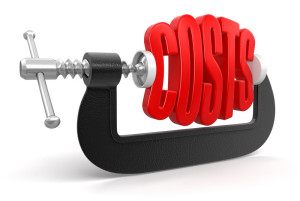Evaluating the value of IT investments in healthcare is a significant challenge for health IT leaders and their organizations. With the growing demand for digital health solutions and the increasing interest in AI, establishing a comprehensive IT investment valuation process has become crucial for health systems both large and small. My colleague at StarBridge Advisors, David Muntz, recently wrote an excellent blog post describing what we call the VOI framework – “An Effective Strategy for Valuing HIT Investments”.
establishing a comprehensive IT investment valuation process has become crucial for health systems both large and small. My colleague at StarBridge Advisors, David Muntz, recently wrote an excellent blog post describing what we call the VOI framework – “An Effective Strategy for Valuing HIT Investments”.
Traditional metrics like ROI, IRR, and TCO are often used to assess IT investments. While these financial measures are important, relying solely on them can be insufficient. As David outlines in his blog, StarBridge Advisors has developed a Value of Investment (VOI) framework that combines traditional financial metrics with additional elements that capture the broader impact of IT investments.
I encourage you to read David’s entire blog post where he expands on these core elements of the VOI framework:
-
- Flexibility: Modern IT solutions provide new capabilities, such as using smartphones to locate the nearest mobile imaging device or utilizing AI for image evaluation with high precision. This flexibility improves operational efficiency and patient care.
- Intangibles: Non-physical assets like clinical outcomes, patient satisfaction, and brand loyalty play a crucial role. Personal stories that highlight the human impact of IT investments often provide the most compelling evidence of value.
- Social Value: IT solutions that meet patient and family needs, such as enabling control over care environments or providing interpreter services, significantly enhance patient experiences and outcomes.
- Risk Management: Effective risk management is essential to achieving the anticipated value of IT investments. The framework identifies nine risk categories with targeted questions to help organizations determine acceptable risk levels.
- Accountability: Ensuring that those responsible for implementing and using the IT asset are accountable for achieving results that drive continuous improvement and better outcomes.
Additional analyses include stakeholder impact, capability-based assessment, market positioning, strategic alignment, and intellectual capital.
Evaluating IT investments requires a comprehensive approach. StarBridge Advisors offers the expertise and tools to help you develop and deploy a personalized VOI framework. David and I are happy to explore with you how we can help you maximize your investment.
Related Posts:
What do healthcare CEOs want from technology in 2024 and beyond?
Beyond cost cutting: Health IT’s role in financial health


 CIOs need to understand the technical debt of a large application portfolio and the total cost of ownership (TCO) for systems. They need to find ways to reduce the cost of commodity services, and to create capacity for new work.
CIOs need to understand the technical debt of a large application portfolio and the total cost of ownership (TCO) for systems. They need to find ways to reduce the cost of commodity services, and to create capacity for new work.